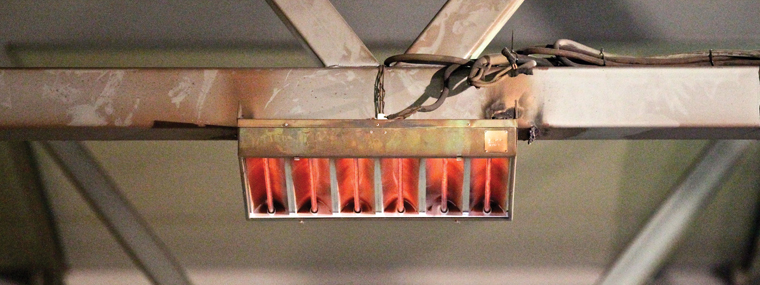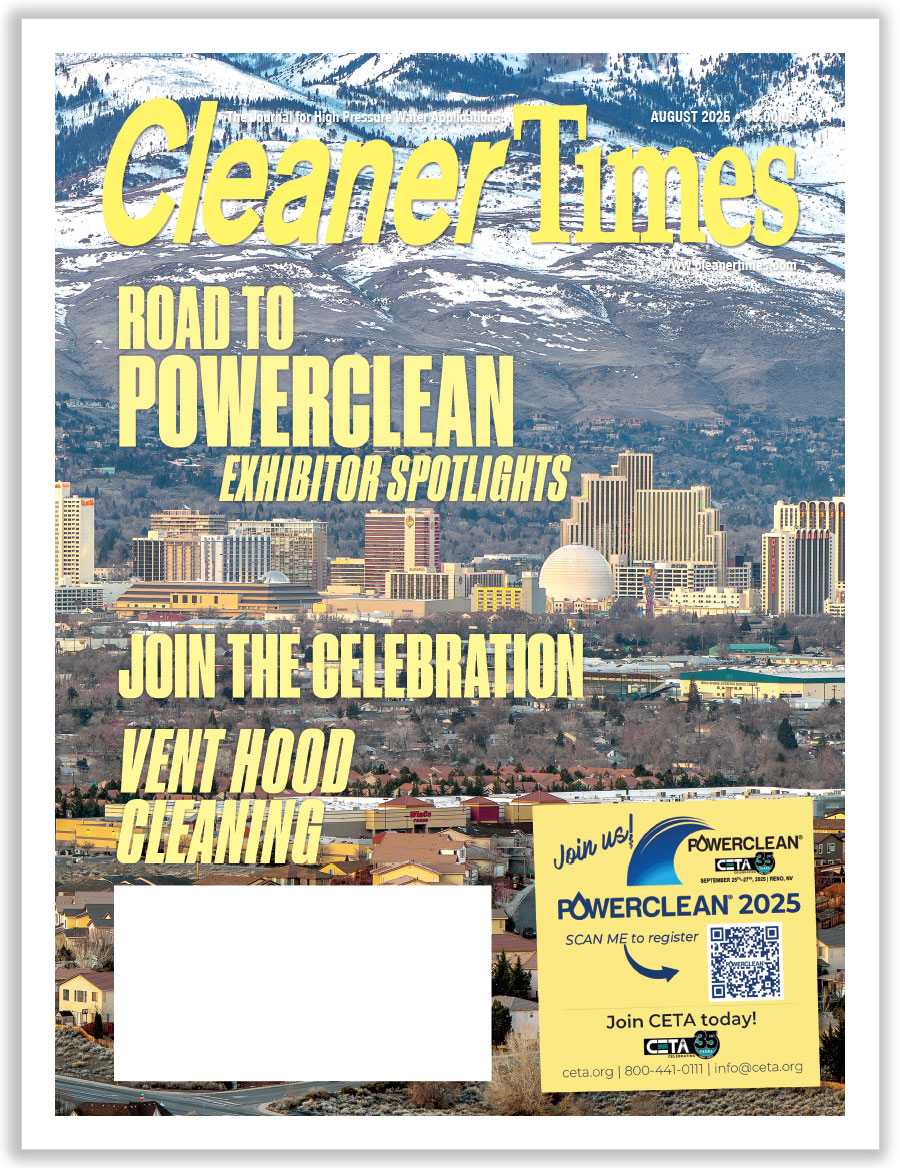
Choosing a Heater
By Diane M. Calabrese / Published December 2019

How will the heater be used? That seems an obvious first question when choosing a heater. It’s not. Start instead with this one: Where am I?
In New York City, using a portable heater at a jobsite requires a permit if the heater uses a combustible liquid or flammable gas. The application process for the permit requires proof of liability insurance and certificates of fitness for such things as fuel storage and handling.
Deeming the risk of fire and carbon monoxide exposure too great, Massachusetts made the use of kerosene heaters illegal. So before buying any portable heater, be sure to determine there are no rules precluding its use.
Portable heaters are intended to function as supplemental or temporary suppliers of warmth. They should never be relied on as the primary source of heat.
With the cost of heating with natural gas being so low, connecting a workspace, shop, or storage area to the grid may be more economical—and safer—than using a portable heater. Here, too, however, there are regional differences. In the Golden State, one community has already disallowed new connections to natural gas pipelines.
California is the same state where portions of the electric power grid were shut down in October 2019 during an interval of high winds in an effort to prevent wildfires. The idea was that should a transmission line fall, it would not be able to ignite dry brush and wood.
It is sometimes difficult to believe one-fifth of the 21st century is firmly in the past, given the unusual approaches to balancing risk and technological options regarding the nation’s energy supply. Fortunately, in the realm of portable heater innovation, designers and engineers have kept moving forward.
Not only are portable heaters offered in more varieties than ever before, but they are also becoming safer, more energy efficient, and quieter with each iteration. The heaters always pose one risk that built-in heating systems do not. They can topple. Safety features such as automatic shutoff, if a heater falls over, reduce risk with electric heaters, but using any heater requires attention to safety.
Heaters must be kept far from combustible material. They should be placed so they have maximum stability—that is, on a truly flat surface. If they have a cord, the cord must be respected, noted, and kept out of the path of foot traffic. Water and heaters with an electrical connection don’t mix. Keep heaters away from anything with flammable liquids. Like any equipment, heaters must be serviced routinely and taken out of service if they are not intact or functioning reliably.
When using a heater fueled by kerosene or gas, it’s especially important not to choose a model that is too big for its surroundings. Ventilation depends on an adequate supply of air in a workspace. Although unvented heaters can still be used in many parts of the country, adequate ventilation is best achieved with vents and correct sizing of the heater.
If a heater is fueled by kerosene, make certain to use the correct fuel grade, K-1. (The sulfur content of K-2 kerosene has resulted in restrictions on its use.) Similarly, if a heater is designed to be fueled by propane, use only propane. Fuels are not interchangeable, even in emergencies.
When a blower is coupled with a heater that uses combustible fuels, a source of electricity will be needed. Thus, some fuel heaters also have cords.
Some heaters are designed to use liquefied petroleum gas (LP), which may come from gas wells or a refinery (where it is a byproduct). LP is very abundant in some parts of the country, and because it produces no more unwanted emissions than natural gas, relying on a heater that uses it may make sense.
In the warmer parts of the country, the need for supplemental heat may be rare. And it may seem that any heater will do. Yet do take a look at the length of warranty and any automated control assists on a heater before buying.
One thing that can enhance the usefulness of a supplemental heater is insulation in the area where it will be used. In some framed structures without built-in heat or insulation, a portable heater may add only a bit to comfort.
Safety and fuel/power options firmly in mind, it’s possible to find a heater that will satisfy most needs. Start by ranking which is most important: type of heat or power source, quality of heat provided, longevity, noise level, and go from there.
Many Options
Back up once more to insulation. Heat is a disorganized form of energy. Intuitively, we know that. In the science lexicon, we point to entropy, the movement of all energy to less organized forms.
Heat dissipates quickly whether it is transferred by convection (movement along a gradient), conduction (travelling through a solid), or infrared radiation (rays heating the object they strike). Heaters are available that make use of all three types of transfer.
A combustion-type heater produces heat that is conveyed by air gradients. A conduction heater is generally more than just metal that heats up; the metal encloses an oil-based substance that retains some of the heat and amplifies the heat conducted through the metal. Infrared heaters direct their rays to a target, such as a car that requires drying after a wash.
A blower or fan that’s used with a convection heater can be noisy. Even heaters with intermittent fans can be distracting or annoying, so test a heater and know the noise level before buying.
There are convection heaters that do not use blowers or fans. They use micathermic heating, which combines heat radiating off a panel—generally on a wall—with natural convection currents. Where baseline tem-peratures are relatively high, such as in a home with a furnace, they are options, but they would not be much use in a space with a low baseline temperature. (The heater type takes its name from the sheets of mica that cover the heating element)
Heaters can be compared by their Btu output. (Reminder: One Btu, or British thermal unit, is the heat required to raise the temperature of one pound of water one degree on the Fahrenheit scale, or about 252 calories.) A Mi-T-M Corporation (www.mitm.com) FAQ on heaters suggests that a heater can warm a 25-sq.-ft. space for every 1000 Btu of output.
Electric heaters can be compared by their wattage. (Reminder: A watt equals one joule per second, or in electrical terms it is the power that develops in a circuit when one ampere flows through a potential difference of one volt.) Sylvane (www.sylvane.com) suggests a watt to square footage conversion of 10 to one. In other words, a 750-watt heater would heat a 75-sq.-ft. space.
The heat ultimately provided in a space depends on its baseline temperature (whether there is a primary heat source or not), insulation (present or absent), air flow, disturbances (doors opening frequently), and so on. Attending to issues like insulation in a workspace will increase not just comfort but also the efficiency of supplemental heat.
Not all electric-powered heaters carry efficiency ratings. But electric-powered heaters can add significantly to an electric bill.
Ultimate Washer® (www.ultimatewasher.com), which sells a wide range of heater types and sizes, offers detailed descriptions of its products online that include Btu output per hour. The details provide a valuable assist to prospective buyers.
EF Rhoades Cleaning Equipment (www.efrhoades.com) is one of many companies that sells waste oil heaters. It sells Energylogic™ and Renzor®. Waste oil heaters ought to be considered by companies having easy access to waste oil, such as distributors with service shops. They not only put waste oil to a productive use, but they also generate significant heat.
To get sufficient Btu from a heater—in other words, heat that satisfies the requirements of the buyer—it is often necessary to choose a combustible fuel as the power source. Going full circle, eschewing use of fossil fuels is something that needs to be considered in this context. (Portable heaters and generators were brought into service in California when part of the electrical grid was shut down.)
When choosing a portable heater, a contractor, distributor or manu-facturer can begin by answering a short list of questions: 1) Are there any restrictions on types of heaters that can be used in this region? 2) How will the heater be used? Is it going to be tapped to add warmth to a workspace, or will it be used for drying a surface or simply adding personal warmth? 3) How often will the heater be used? 4) Does access or cost of a fuel or power source make the use of that source prohibitive? (In other words, is kerosene available and can it be stored? Or, is the cost of electricity from the grid so prohibitive an electric heater would be uneconomical?) 5) Are there expectations for the heater that should be added to a list of requirements, such as that the device should not be noisy?
Warm thoughts…





